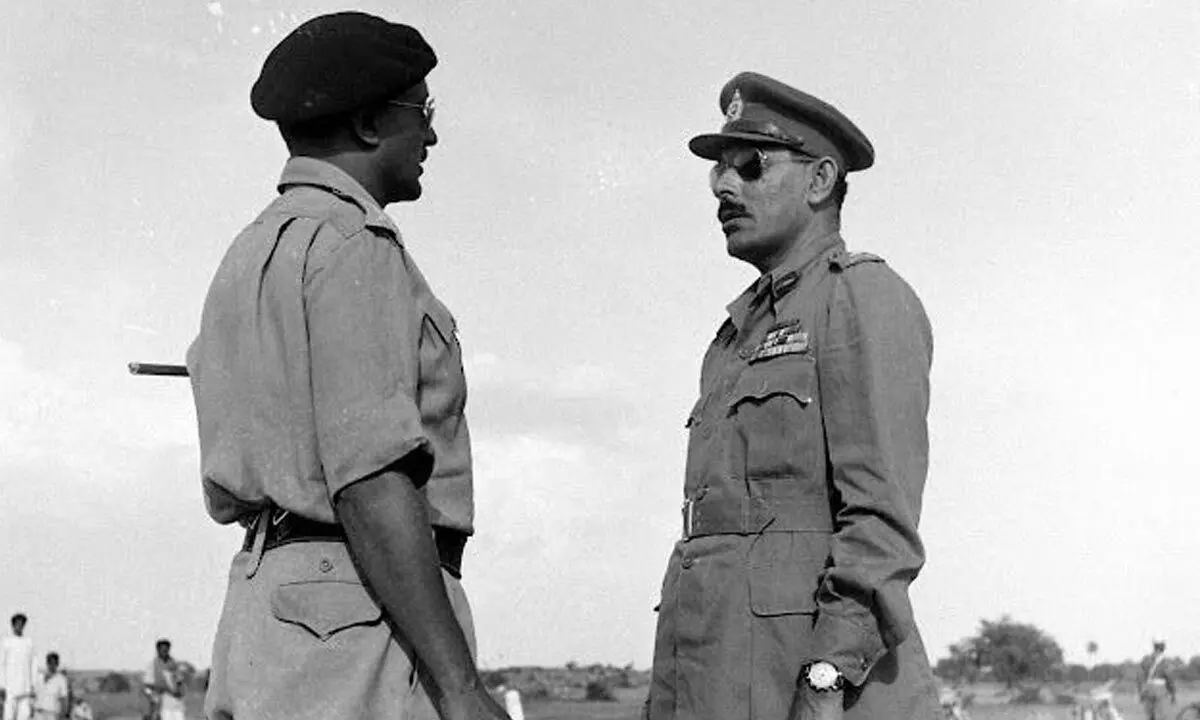Liberation or Integration? The debate continues

Liberation or Integration? The debate continues
September 17, 1948 is the day Nizam of Hyderabad Mir Osman Ali Khan, the seventh in the line of the Asaf Jahi dynasty, had surrendered in the wake of Operation Polo, the military invasion of Hyderabad by Indian forces.
September 17, 1948, is the day Nizam of Hyderabad Mir Osman Ali Khan, the seventh in the line of the Asaf Jahi dynasty, surrendered in the wake of Operation Polo, the military invasion of Hyderabad by Indian forces.
This was the day 75 years ago when Hyderabad State became part of the Indian Union. That's what the general perception in the present times is. But historians say that it was not quite so. The accession happened on January 26, 1950, when Nizam was made the 'Rajpramukh' of Hyderabad state.
The Police Action Against Hyderabad 1948, written by SN Prasad, who is the most authentic reference to convulsions of that time, noted the Nizam of Hyderabad was anxious to come to an honourable settlement with India.
On September 23, 1948, in a broadcast to the Islamic world about "the true facts of the Hyderabad situation", the Nizam denounced the Laik Ali government and the Razakar militia, which together for over eight months "brought about the most intense communal hatred, which unfortunately in the position I was, I could not prevent".
He explained how the Razakars, headed by Kasim Razvi, had no stake in the country or any record of service behind it. "By methods reminiscent of Hitlerite Germany, took possession of the state; spread terror into all elements of society, Moslem and non-Moslem, that refused to bend knees to them; committed arson and looting on a large scale, particularly against Hindus; and rendered me completely helpless," the Nizam said.
The toll on the Indian Army side was 42 dead, 97 injured and 24 missing. In the Hyderabad Army, 490 were killed and 122 injured. Besides, 2,727 Razakars were killed while 102 were wounded and 3,364 were captured. Prasad says the irresistible advance, joined by the exemplary behavior of the Indian forces towards the civil population irrespective of religion or creed, nipped the guerrilla resistance in the bud and prevented prolonged resistance in the countryside. On October 18, 1948, Major General JN Chaudhuri of the Indian Army was appointed Military Governor of Hyderabad state. Though he oversaw the armed forces and the police, he had overriding authority on other portfolios.
While it was a military government in name, it functioned in the manner of a civil government. Martial law was never introduced in the state of Hyderabad. On October 29-30 that year, Sardar Vallabhbhai Patel; VP Menon, political advisor in the Ministry of the States, Government of India; and Maj Gen Chaudhuri met in Mumbai and decided on measures to quickly set up democratic and popular institutions in Hyderabad and to complete accession of the state to the Indian Union. Though the Nizam had not signed the instrument of accession, the acceptance of the Indian Constitution by him was regarded as tantamount to accession, and thus Hyderabad became integrated with the Indian Union.


















